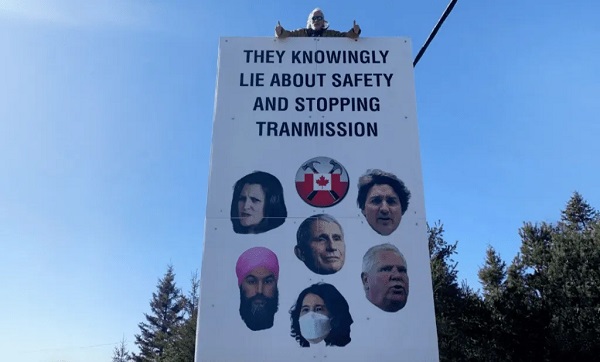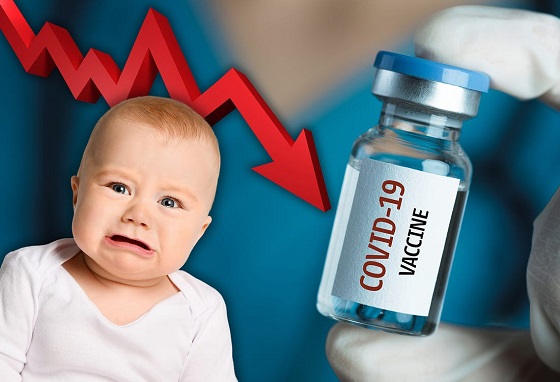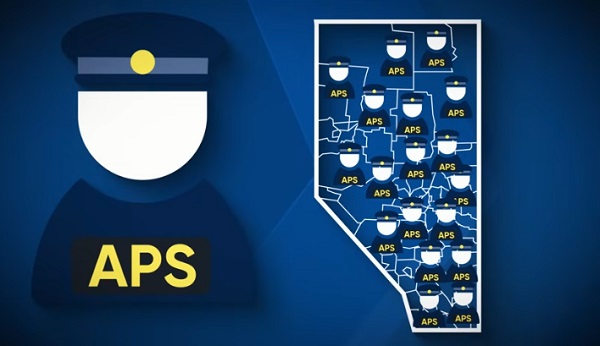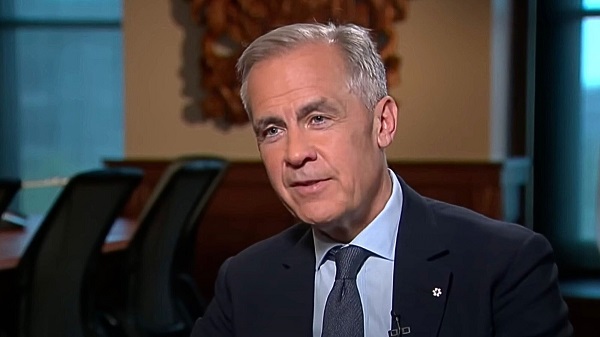 You want my idea for the wage subsidy… well here it is.
You want my idea for the wage subsidy… well here it is.
WARNING: It is so simple to implement, there is no way a government would do it.

 You want my idea for the wage subsidy… well here it is.
You want my idea for the wage subsidy… well here it is.
WARNING: It is so simple to implement, there is no way a government would do it.
People have said “you are quick to pick apart the wage subsidy, so what is your solution?”
So… you asked for it… here it is:
I’ve said it from the very beginning that it should resemble EI support. All they should be doing is simple.
(No this is not an April Fool’s joke… but I am hoping the Press Conference on April 1, 2020 by the Minister of Finance was)
I was fine with EI amounts… but since we have the Canadian Emergency Response Benefit (CERB)… let’s use that amount to keep it more simple.
The amount is this:
(just like the CERB). $2,000 per worker per month, taxable, and no withholdings up front
Put a ‘clawback’ amount on those that are getting it like the clawback on Old Age Security or regular EI benefits for when they file income tax next year.
The 3-prong approach to the subsidy
Prong 1 – CERB from Service Canada
Everyone should get it. Yes, everyone.
However, anyone that makes more than the EI maximum in 2020 must pay back 30 cents of the CERB on every dollar over the $54,200 EI maximum threshold when they file their 2020 taxes.
So when you file your personal 2020 income tax, if you ended up making more than $80,667 in income, you will have had to pay back the full $8,000 of CERB received on a T4E.
This results in helping everyone today, help jump start the economy when we need to and have those that get back on their feet quicker, paying some or all of it back.
If you received both the CERB from Service Canada, and the CERB through your employer, you have to pay back the amount greater than the $8,000 received, and then any other amount based on the formula above.
This will prevent or reduce the double dip.
Prong 2 – CERB through the Small Business employer
The small business (less than $15M in assets of all associated corporations) employer would also get the CERB on a per-employee basis. They already have to fill out the number of employees when they file their remittance forms, so what’s the difference?
This $2,000 flows through to subsidize the wages, and must be paid to the employees. You create a different box number to track it on the T4 slips next year for audit purposes and to make sure the employee got the money.
I know this isn’t 75%, but the 75% was a capped amount anyways. That’s why I said keep it simple.
In order to incentivize the small business employer so they don’t lay them off, treat it as a flow through, and non-taxable to the employer.
So if there are five employees at the small business, the employer will get $10,000 of CERB to flow through to the employees.
The employee’s wages will be subsidized by the $2,000 amount, and they will put the $2,000 in a different box on each T4 slip for tracking purposes.
In order to incentivize the employer to act as the flow-through for Service Canada, this $2,000 will not be subject to EI or CPP by the employer and will not be included in the taxable income of the employer.
This allows the employer to claim the full wage deduction, have subsidized payroll costs, and save the income tax amount by deducting the full payroll.
By not counting it as income, this tax and remittance savings can be viewed liked an “admin fee” for acting on Service Canada’s behalf.
On $10,000 (5 employees) this would save up to $252 in Employer EI, $525 in Employer CPP, and $900 in federal income tax.
Cost to government for employer being the administrator instead of Service Canada: $1,167.
Incentive for employer to NOT lay off the staff, $10,000 in wage costs… and $1,167 in tax savings.
Prong 3 – CERB through Large Corporations
If the employer is getting the CERB on a per-employee basis and they are a large (greater than $15M in assets) corporation or associated group, allow them to not pay employer EI or CPP on the CERB.
100 employees = $200,000 = up to $5,040 in reduced EI, and $10,500 in reduced CPP remittances as the incentive.
So the employer gets $2,000 per employee as a subsidy to cover wage costs, and does not have to do payroll withholdings on the amount, saving them a total of $200,000 + 5,040 + 10,500 = $215,540.
Or put another way, they can save $15,540 by not laying them off.
If that’s not enough incentive, then perhaps look at it being only 50% taxable, which in the example above, would reduce Federal income tax by $15,000 (using 15% general rate x 50% x $200,000)
Audit Tracing
By simplifying the process, there is less ability for abuse.
Service Canada will issue everyone a T4E with the CERB they personally received from them (no application necessary).
T4 box numbers can be reconciled by CRA on slip filing to amounts of CERB received by the employer through the PIER system.
Those same boxes can be reconciled to specific individuals on tax filings to see if there were any that should repay.
Amounts greater than $8,000 received by anyone will need to be repaid.
Those with income over the EI Maximum amount, will have to repay some or all of the CERB back when they file.
If you don’t agree… well… the specific repayment formula can be figured out later… we have a year for that. We need the money in the public’s hands now though.
In Conclusion
These incentives and recapture mechanisms will reduce the likelihood of layoffs in low-margin industries like hospitality since $2,000 a month goes a long way to covering those wages; it will “Flatten the EI Curve” (trademark pending – not really… but I like saying it)
It would get everyone back working quicker after this is done by maintaining the connection to employers, and get the economy kick-started with cash injections at the front of this thing, rather than the end.
In the end… you have employers flowing the $2,000 through to the employee on Service Canada’s behalf as a no-withholding amount and a nominal cost to the employer to administer it, rather than Service Canada processing hundreds of thousands (if not millions) of individual applications.
If they are a small business, they actually get a tax savings by being the administrator and helping Service Canada in the process.
If they are a large business, they can have a good chunk of payroll costs reduced by not having to pay EI and CPP on the amount, and perhaps tax savings.
In the end, every worker gets $8,000 over 4 months just to buy everyone time and we have Flattened the EI Curve.™
Biography of Cory G. Litzenberger, CPA, CMA, CFP, C.Mgr can be found here.

The Justice Centre for Constitutional Freedoms announces that Ontario resident George Katerberg has launched a legal challenge against the Ontario Ministry of Transportation for banning roadside billboards with social or political messages. Mr. Katerberg believes that the Ministry’s policies go too far and undermine the freedom of expression of all Ontarians.
This case goes back to March 2024, when Mr. Katerberg, a retired HVAC technician, rented a billboard on Highway 17 near Thessalon, Ontario, that featured images of public health officials and politicians alongside a message critical of their statements about vaccines.
After the Ministry rejected his proposed billboard several times on the grounds it promoted hatred, a constitutional challenge was launched with lawyers provided by the Justice Centre. Mr. Katerberg’s lawyers argued that the Ministry’s position was unreasonable, and that it did not balance Charter rights with the purposes of relevant legislation.
The Ministry later admitted that the sign did not violate hate speech guidelines and agreed to reconsider erecting the billboard.
However, in April 2025, the Ministry quietly amended its policy manual to restrict signs along “bush highways” to those only promoting goods, services, or authorized community events.
The new guidelines are sweeping and comprehensive, barring any messaging that the Ministry claims could “demean, denigrate, or disparage one or more identifiable persons, groups of persons, firms, organizations, industrial or commercial activities, professions, entities, products or services…”
Relying on this new policy, the Ministry once again denied Mr. Katerberg’s revised billboard.
Constitutional lawyer Chris Fleury explains, “By amending the Highway Corridor Management Manual to effectively prohibit signage that promotes political and social causes, the Ministry of Transportation has turned Mr. Katerberg’s fight to raise his sign into a fight on behalf of all Ontarians who wish to express support for a political or social cause.”
No date has yet been assigned for a hearing on this matter.

What was once dismissed as a “conspiracy theory” now has hard data behind it.
A new peer-reviewed study out of the Czech Republic has uncovered a disturbing trend: in 2022, women vaccinated against COVID-19 had 33% FEWER successful conceptions per 1,000 women compared to those who were unvaccinated.
A “successful conception” means a pregnancy that led to a live birth nine months later.
The study wasn’t small. It analyzed data from 1.3 million women aged 18 to 39.
Here’s what the numbers reveal, and what it could mean for humanity.
First, let’s talk about the study.
It was published by Manniche and colleagues in the International Journal of Risk & Safety in Medicine, a legitimate, peer-reviewed journal respected for its focus on patient safety and pharmacovigilance.
The study was conducted from January 2021 to December 2023 and examined 1.3 million women aged 18–39. By the end of 2021, approximately 70% of them had received at least one COVID-19 vaccination, with 96% of the vaccinated cohort having received either the Pfizer or Moderna vaccine.
By 2022, a stark difference was clear.
The vaccinated cohort averaged around 4 successful conceptions per 1,000 women per month.
That’s a staggering 33% LESS than the 6 per 1,000 seen in the unvaccinated group.
This means that for every 2 vaccinated women who successfully conceived and delivered a baby, 3 unvaccinated women did the same.
In 2022, unvaccinated women were 1.5 times MORE likely to have a successful conception.
Again, that’s a conception that led to a live birth nine months later.
The authors did not jump to the conclusion that their study proved causation. They cited that other factors may have played a role, such as self-selection bias
However, the researchers noted that self-selection bias does not explain the timing and scale of the observed drop in fertility.
Moreover, birth rates in the Czech Republic dropped from 1.83 per 1,000 women in 2021 to 1.37 in 2024, adding further evidence that the COVID-19 vaccines may be contributing to the decline in fertility.
That downward trend, the researchers argue, supports the hypothesis that something beyond individual decision-making may be affecting conception rates.
As such, they argue that the study’s results warrant a closer and more thorough examination of the impact of mass vaccination.
If this study holds true, and vaccinated women are really much less likely to have successful conceptions, the implications for humanity are massive.
Millions of babies could be missing each year as a result of COVID vaccination, and recent data from Europe and beyond already point to a deeply disturbing trend.
NOTE: Europe experienced a sharper decline in births than usual from 2021 to 2023.
Live births fell from 4.09 million in 2021 to 3.67 million in 2023, marking a 10.3% decline in just two years.
The new Czech study adds to growing evidence that COVID vaccines may be contributing to a dramatic decline in fertility, just as many feared all along.
As Elon Musk warns, “If there are no humans, there’s no humanity.”
Whether the shots are the cause or not, the trend is real—and it’s accelerating.
It’s time to stop dismissing the signals and start investigating the cause.
Thanks for reading. I hope this report gave you real value. This is a critically important topic that deserves attention.
If you appreciate my work and want to help keep it going, consider becoming a paid subscriber.
99% of readers get this content for free. But just $5/month from the 1% keeps it flowing for everyone else.
If this work matters to you, this is the best way to support it.
Be the 1% who makes it possible.
Catch the rest of today’s biggest headlines at VigilantFox.com.


Ontario man launches new challenge against province’s latest attempt to ban free expression on roadside billboards


This Canada Day, Celebrate Energy Renewal


While China Hacks Canada, B.C. Sends Them a Billion-Dollar Ship Building Contract


So Alberta, what’s next?


Alberta Next Takes A Look At Alberta Provincial Police Force


The Physics Behind The Spanish Blackout


Canadian Oil Sands Production Expected to Reach All-time Highs this Year Despite Lower Oil Prices


Potential For Abuse Embedded In Bill C-5